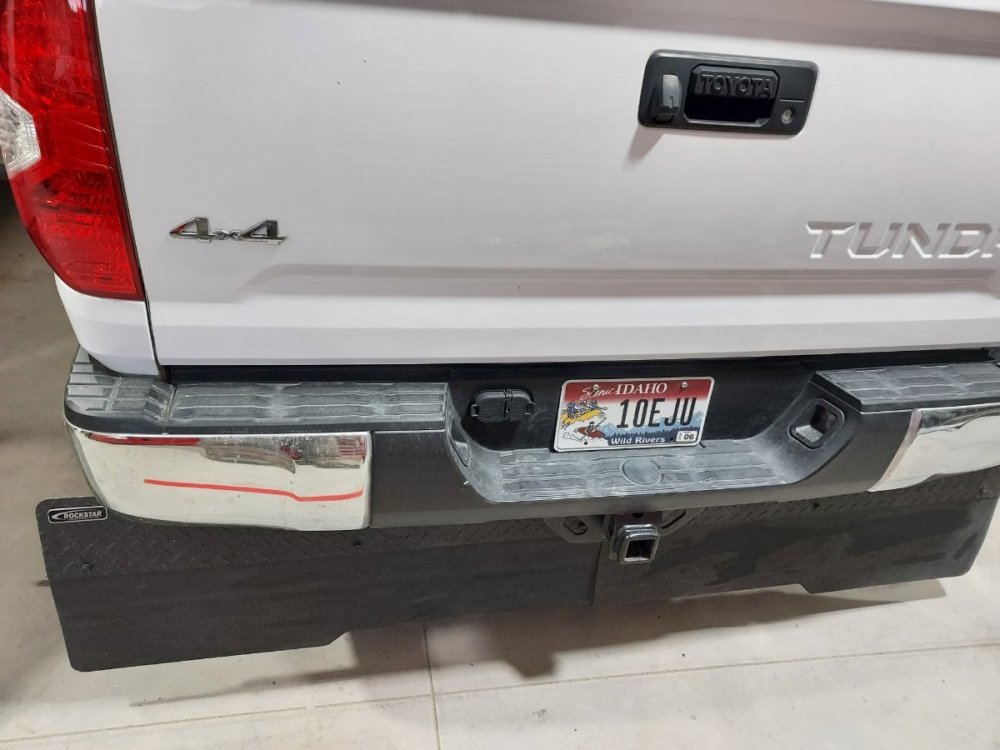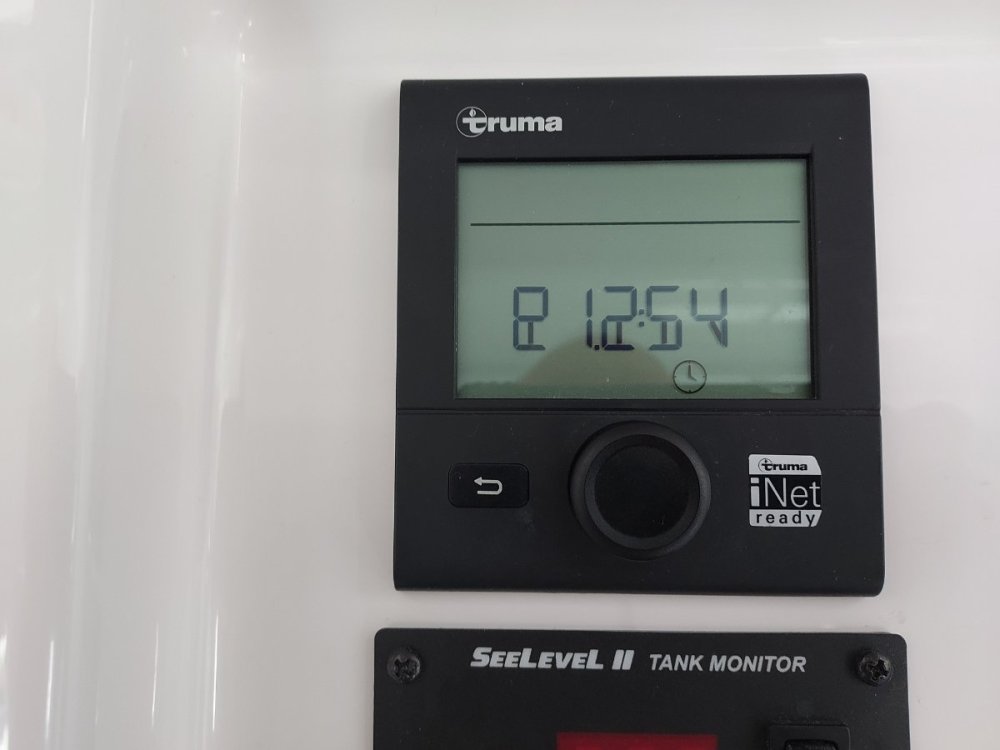-
Posts
923 -
Joined
-
Last visited
-
Days Won
18
Everything posted by Rivernerd
-

Need help with propane generator setup
Rivernerd replied to Happy Camper's topic in Mechanical & Technical Tips
To avoid precisely the problems you are encountering, I carry a spare 5-gallon propane tank in the bed of my pickup tow vehicle, and run my two Champion Dual Fuel 2200 watt generators with a splitter from that tank with the OEM regulators. That spare tank also provides backup in case my two primary 5-gallon tanks run low. For me, an easier solution. -
Please submit a service ticket, even though you apparently fixed the oversight yourself so your pump would function as it should. Oliver needs to be advised of this obvious quality control failure. Based on my experience with Hull #1291, and review of dozens of reports like yours on this forum, Oliver's attention to detail and quality control during production is, at best, inconsistent. Very sad given the premium price charged.
-

has anyone tried the new Dometic fresh jet 2200?
Rivernerd replied to Roadlotus's topic in Ollie Modifications
Mobilejoy: We deferred our delivery date last year, and paid the premium, to get the Truma Aventa AC. It works well. But, I have no basis for comparing the Truma to a Dometic Freshjet. At this point, the Truma Aventa is a known performer. The Freshjet is not. And, it is a "Demonic" product, from a company that has been known to cut corners to improve the bottom line. In your shoes, I would keep my appointment with Oliver and pay the Truma premium. Once the Freshjet has a significant track record, my analysis may be different. That said, in Roadlotus' shoes, I would also keep the appointment for installation of a Freshjet. The travel to Hohenwald for a retrofit would be a "deal breaker" for me as well. -

Discount Tire refuses to sell me LT tires for my trailer
Rivernerd replied to John E Davies's topic in General Discussion
I'll bet Les Schwab will sell you LT tires for your Oliver. But, I wonder why you so strongly prefer LT tires. Do the ST tires offered have fewer plies or less aggressive tread (for your gravel road adventures)? -
That is one reason I placed ours in the closet. It is not real attractive, but we never see it unless we are looking for it, mounted above door height, on the interior closet wall. You raise a good point about securing it with screws, rather than Velcro or double-stick tape, to avoid having to re-level the trailer.
-

Low voltage at the cigaret lighter
Rivernerd replied to Bill and Nancy's topic in General Discussion
Please forgive my ignorance, but what is the "EMS" under the rear dinette seat? Are you referring to the 12V fuse block? Or the main 12V grounding bar? -
Never disconnect the trailer from your tow vehicle unless the trailer wheels are well chocked first. We use rubber chocks on the downhill side of the trailer tires, as well as X-chocks, before removing the trailer coupler from the hitch ball. Don't ask me why this became such an important rule for us...
-
No photos visible to me.
-
Your coupler will work better if you spray it with WD40 at least twice per year, then open/close the coupler several times to work it in to the mechanism. WD40 is also a good rust inhibitor.
-

Xantrex Inverter Issues? Try a Hard Reboot
Rivernerd replied to Rivernerd's topic in Mechanical & Technical Tips
Our Lithionics G31 130Ah batteries have on/off switches. Do you believe that just turning off all 3 of those batteries would perform a hard reboot? -
By "ac fans" do you mean your air conditioner? If so, that could explain the substantial draw down on your batteries. Our Truma AC pulls about 1100 watts when the compressor is running.
-
I expect this works fine if you only camp in warm weather. We sometimes camp in cold weather, and depend on the propane furnace to keep the trailer warm overnight. I prefer to know before retiring to bed that we have sufficient propane in the current tank to run the furnace all night.
-

Xantrex Inverter Issues? Try a Hard Reboot
Rivernerd replied to Rivernerd's topic in Mechanical & Technical Tips
I am keenly interested in the results from the hard reboot of your Xantrex inverter. Please post on this thread after you have completed the process. -
When returning home from the Oregon Coast this April, my wife and I boondocked at a Harvest Host site. That cold evening, we tried to heat water for hot drinks in the microwave using the inverter, but it shut down after just a few seconds. We were surprised and disappointed, because our Lithium Pro Package with Xantrex Freedom XC Pro 3000 watt inverter should enable us to use the microwave on inverted power for at least a few minutes. It had been a cloudy day so we got minimal solar recharge, and with our Nordcold fridge running on DC while on the road, our battery State of Charge was down to about 74%. When we submitted a service ticket, Jason Essary confirmed that we should be able to run the microwave on inverted power at 74% State of Charge (SOC), and much lower, down to 25-30% SOC. With Jason's helpful guidance, I then spent dozens of hours trying to troubleshoot the electrical system, both on the DC and the AC sides. The inverter/charger was charging as designed, and would run 120V appliances that pull up to 1100-1200 watts (including the Truma air conditioner, which pulls 1100 watts with the compressor running), but loads greater than 1400 watts (like the microwave or a space heater on a high setting) caused the inverter to shut down. Nothing we tried solved the problem, including replacement of the Optifuse 300A inverter breaker, which Oliver sent to me under warranty. I also spoke with a Xantrex customer service rep (after45 minutes on eternahold) who assured me the problem could not be with the inverter, so it must be in the trailer wiring. Jason then authorized me to engage an RV service tech at Oliver's expense to try to find a solution. But that was right before I had planned to use the trailer boondocking at the Lochsa River the week of May 15. I decided to engage a tech after I returned home. But while camping (and running the Lochsa river during the day) I happened to mention the inverter issue to another RVer. He asked me if my inverter is a Xantrex. Yup. He then told me he had been advised by an RV service tech to do a "hard reboot" of his Xantrex inverter to resolve a similar issue. He explained that this involves disconnecting both the positive and negative DC cables from the inverter, and leaving it at least overnight, then reconnecting. I determined to give it a try after I returned home, as it would be relatively easy to do. To my surprise, the "hard reboot" solved the problem. My tests have confirmed that we can now run the microwave on full power (1540 watts) for 4 minutes or more at a time, at SOC levels down to 35%. So, the Xantrex customer service guy was wrong--the problem was with the inverter. And, the solution was relatively easy to implement: turn off all batteries, and ensure that shore power is disconnected (so there is no power to the DC cables), then disconnect the DC cables from the inverter and leave at least overnight. I left mine disconnected for 3 days. Then reconnect, and turn the batteries back on. If your Xantrex inverter is not performing up to spec, try a hard reboot.
- 61 replies
-
- 16
-

-

-
I use the Mopeka tank sensor system. It sends reports to an app downloaded onto my phone. It works well. About $70 from Amazon. https://www.amazon.com/AP-Products-024-1002-Propane-Indicator/dp/B01C5RQKJA/ref=asc_df_B01C5RQKJA/?tag=hyprod-20&linkCode=df0&hvadid=312067194179&hvpos=&hvnetw=g&hvrand=12444925943405525704&hvpone=&hvptwo=&hvqmt=&hvdev=c&hvdvcmdl=&hvlocint=&hvlocphy=9029558&hvtargid=pla-492064932214&psc=1
-

Black Tank Flush Backflow Valve
Rivernerd replied to Mike and Carol's topic in Mechanical & Technical Tips
Please forgive my ignorance, but why the white hose through the bathroom window and into the toilet? Is the Oliver-installed flush valve below the window not good enough? -

Where are the "Like Emoji's"?
Rivernerd replied to John Dorrer's topic in How to Join and Use Oliver Travel Trailer Forums
Are you logged in? The system won't let me "Like" unless I am logged in. -
I am not Craig, but I did live in the Seattle area for 35 years. Any time between July and September will be fairly crowded, because July and August are the sunny, dry months on the west side of the Cascades. On average, the fall/winter/spring rainy season begins around mid-September, and lasts until the 5th of July. And, schools usually start in early September, right after Labor Day. To minimize crowding but maximize the chance of good weather, I would go the first couple of weeks of September, right after school starts but (hopefully) before the 9-month drizzly/cloudy season begins. If your sojourn will last longer than 2 weeks, you will encounter more competition for campsites in August (before school starts), and a lower likelihood of good weather after mid-September. Hope this helps.
- 10 replies
-
- 2
-

-
- army corp
- state parks
-
(and 1 more)
Tagged with:
-

Question about the backup camera monitor
Rivernerd replied to shhQuiet's topic in Mechanical & Technical Tips
When our Elite II was ordered, we, too, wanted a larger monitor. Anita Johnston advised that a larger monitor was not an option. So, we decided to go with the factory-installed backup camera, but reserve the option of upgrading to a larger monitor later. Now that we have "lived with" the 4" monitor that comes with the backup camera system Oliver installs since last November, we are happy with it. It provides a clear view of the area immediately behind the trailer. Yet it occupies less dash space, and causes less visual obstruction of the area in front of the tow vehicle, than a larger monitor. We feel no need to upgrade to a larger monitor. -
We also chose Rockstar mudflaps for our 2019 Tundra. We like that the assembly covers the full width of the truck. On our Tundra, the Rockstar is mounted inboard of the bumper, placing it closer to the rear wheels. See attached photo. No visible chips yet on Hull #1291.
-

Truma CP Plus Corrupted Display
Rivernerd replied to Rivernerd's topic in Mechanical & Technical Tips
While camping I tried: (1) turning the CP Plus off, then on again and (2) turning off all 3 of our batteries, then turning them off again and (3) doing a Reset following Truma's instructions. None of the three methods worked. So, once I got home, I submitted a service ticket. Since I wasn't using any of the Truma appliances at home, I turned the CP Plus off. A few hours later, Hannah Dowdy from Oliver responded to my service ticket by recommending a Reset. I decided to try that again. To my surprise, when I turned the CP Plus back on, the display read correctly! No Reset was required. It would appear that turning the CP Plus off, then waiting several hours, resolved the display issue. Hope this helps if anyone else encounters this quirky issue. -
The Truma CP Plus wall control display in our Hull #1291 has become corrupted. See attached photo. It should read: "P 12:54", denoting 12:54 p.m. Since we took delivery of the trailer last November, the Truma CP Plus wall control has worked well to control the furnace, AC and Aquago water heater. The display was always crisp. But, on a recent trip, the display suddenly appeared corrupted. Has anyone else had this issue come up?
-
You get what you pay for. I tow our Elite II with a 1/2 ton Toyota Tundra, with tow package and an Andersen WD hitch. The experience is totally acceptable. But, we have to watch payload carefully, and I can sure tell there is a trailer back there on the road, especially on curves. But, when I eventually replace the Tundra, I will look hard at a 3/4 ton Chevy, Ford or Dodge (the only options presently). Why? More worry-free camping, less scrimping on payload, less stress when towing.
-
Here is my advice: don't do it. The forces on anything cantilevered off the back end of an Oliver trailer are much more than you might think. Even if you had the factory-installed hitch, attaching a generator platform to that hitch, and hauling a generator there, would be unwise. Find another place to haul the generator, like in your tow vehicle, as we do.
-

My how-to video for cleaning the weep holes and tracks
Rivernerd replied to Wayfinder's topic in Mechanical & Technical Tips
https://www.pellandent.com/RV-Window-Seal Pull your flexible seal, then match the profile with the one on the Pelland Enterprises web page to ensure you get the same one.






